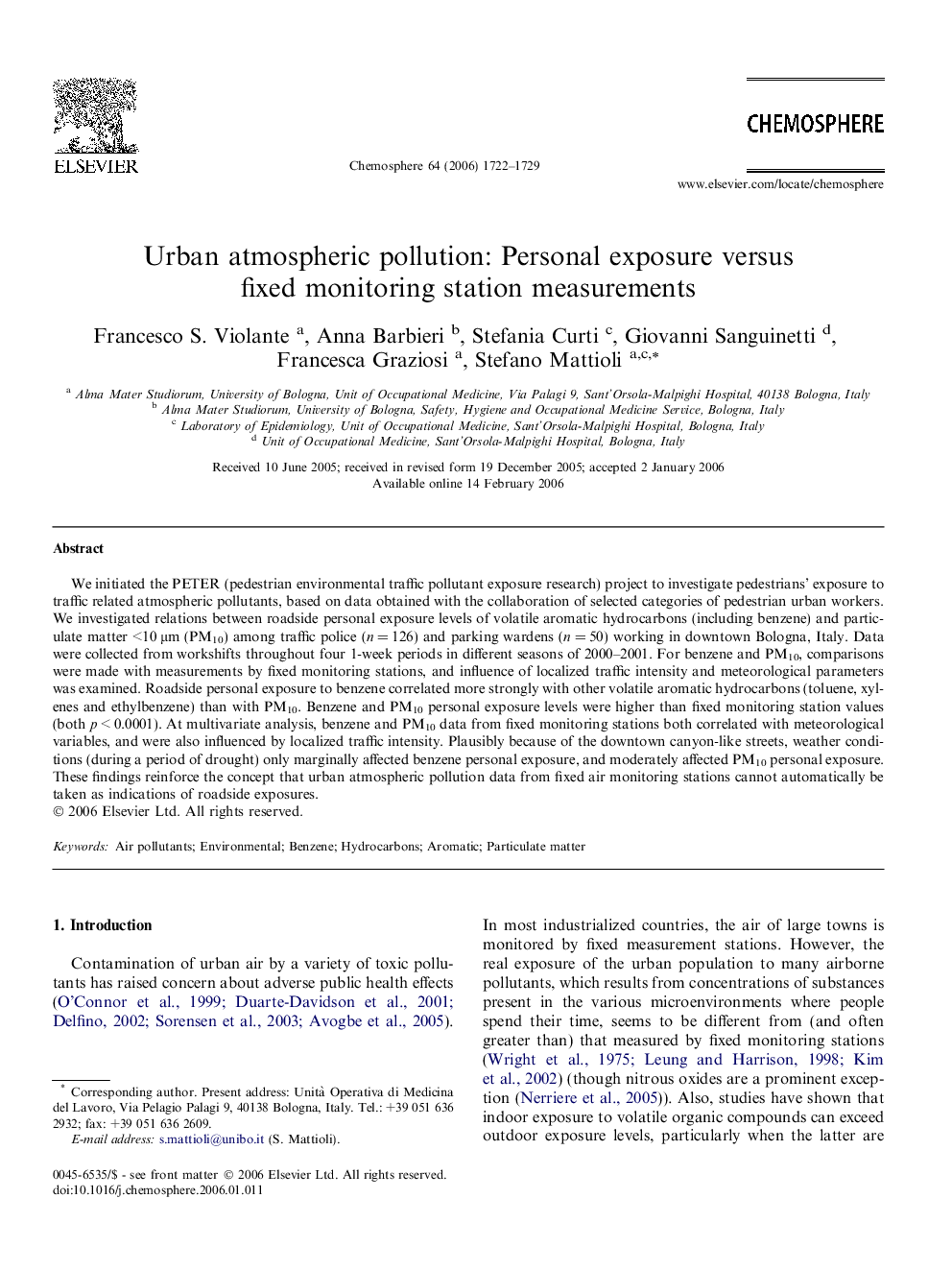| Article ID | Journal | Published Year | Pages | File Type |
|---|---|---|---|---|
| 4415932 | Chemosphere | 2006 | 8 Pages |
We initiated the PETER (pedestrian environmental traffic pollutant exposure research) project to investigate pedestrians’ exposure to traffic related atmospheric pollutants, based on data obtained with the collaboration of selected categories of pedestrian urban workers. We investigated relations between roadside personal exposure levels of volatile aromatic hydrocarbons (including benzene) and particulate matter <10 μm (PM10) among traffic police (n = 126) and parking wardens (n = 50) working in downtown Bologna, Italy. Data were collected from workshifts throughout four 1-week periods in different seasons of 2000–2001. For benzene and PM10, comparisons were made with measurements by fixed monitoring stations, and influence of localized traffic intensity and meteorological parameters was examined. Roadside personal exposure to benzene correlated more strongly with other volatile aromatic hydrocarbons (toluene, xylenes and ethylbenzene) than with PM10. Benzene and PM10 personal exposure levels were higher than fixed monitoring station values (both p < 0.0001). At multivariate analysis, benzene and PM10 data from fixed monitoring stations both correlated with meteorological variables, and were also influenced by localized traffic intensity. Plausibly because of the downtown canyon-like streets, weather conditions (during a period of drought) only marginally affected benzene personal exposure, and moderately affected PM10 personal exposure. These findings reinforce the concept that urban atmospheric pollution data from fixed air monitoring stations cannot automatically be taken as indications of roadside exposures.
